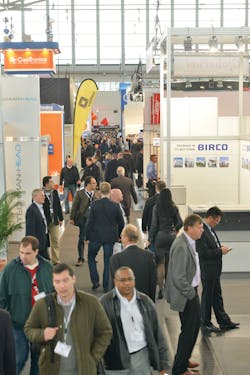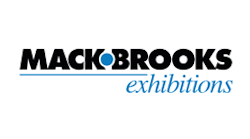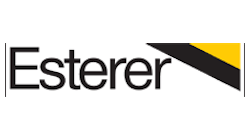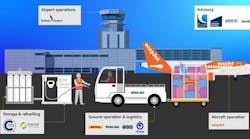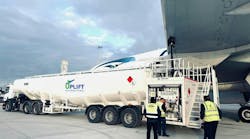We’ve already written in print and online about many of the products we saw during our recent visit to inter airport Europe last October in Munich, Germany.
Here’s a brief rundown of a handful of fueling products on display. At least three of the products were entered into the show’s contest to pick the most innovative product from each of the four categories – Data, Design, Ramp, Terminal and Design – used to classify the 600-some exhibitors.
E3 Gate – Cavotec
Cavotec used the show to announce the addition of a new fueling element to its “E3 Gate” concept.
The E3 Gate system– so called because it’s designed to deliver optimal performance in Ergonomics, Economy and the Environment – supplies parked aircraft with 400Hz power, PCAir, blue and potable water and sewage – and now fuel – via underground pit systems. This makes for an uncluttered tarmac around aircraft, thus improving safety and operational efficiency.
“By using Cavotec’s fully integrated E3 Gate, airports can reduce their capital investment, reduce the risk of collision between mobile GSE and aircraft, and have far simpler servicing routines,” said Yann Duclot, Cavotec group manager, sales and marketing.
Visitors to the engineering firm’s booth also received demonstration on how many of the company’s in-ground fueling systems – fuel hydrant pits and valves, high point vents, low drain points, pop-up pantographs, and fuel hydrant carts – could all be integrated with the E3 Gate concept:
- Pop-up pantograph systems support safer and faster fueling.
- An “Easy Lift” design also makes one-man operation easy.
- Fueling systems also include loading arms, tank farm systems, floating suction arms and truck loading systems.
(And while we’re at it, Cavotec’s exhibit also included its sub-freezing PCAir system capable of cooling the largest passenger aircraft in service today far faster than conventional alternatives. Currently, 18 systems have been in operation since 2011.)
Refueling Nozzles – Elaflex
The new ZVF 50 is a high-flow aviation nozzle for over-wing and helicopter refueling.
The most noticeable feature of the nozzle is the use of color-coding to avoid misfueling of jet and avgas fuels. The nozzle can also be used for aviation biofuels. A full 2-inch body ensures a low pressure-drop and high flow rate and sensitive flow control from 0 to 400 liters per minute.
Other main features of the nozzle include the following:
- A light lever action that make it easier to hold open.
- Integrated aircraft surface protection bumpers.
- Quick spout change.
- Safe strainer inspection.
- A modular construction that make repairs and maintenance easier.
In addition, standard spouts can be fixed in any desired position without tools. A quick spout change system is optional along with an additional option for an integrated sight glass.
Hydrant System Dispenser – Esterer
The new hydrant system dispenser by Esterer dubbed the β (beta) is engineered for quick turnaround time of aircraft fueling from a hydrant system. While developing dispenser, the company says it focused on optimizing the overall fueling process, making each step faster, easier and safer. As a result, getting the dispenser ready for operation takes only few minutes.
According to the company, the most apparent innovation is the new layout of the refueling pantograph in a new compact version at right angles to the chassis. The pantograph is fixed in the middle of the lifting platform for optimal reach, allowing more flexibility while positioning the vehicle underneath the nozzle of the aircraft wing.
The central position of the pantograph on the lifting platform as well as the fact that the pantograph stays underneath the wing while refueling allows for short deck hoses. Both deck hoses are fixed onto the pantograph, unlike the common integration on the railing. In case of fueling with only one deck hose, only the single hose has to be handled. The other coupling remains in position directly at the pantograph head.
The compact layout fits all sizes of filter monitor and filter water separators as well as all meters with electrical or mechanical meter head. Up to two additional hose reels can be added to the chassis.
The dispenser also offers comfortable stair-like steps for easy entry to the lifting platform.
In addition, the dispenser includes the following features:
- The main engine automatically shuts off during the fueling process, saving fuel, lowering operational costs and protecting the environment.
- The length of the hydraulic lifting frame is adjustable in order to adapt to possible tear and wear of the intake hose length.
- The modular system with bolted connections offers easy repair or exchange of parts.
Gecko – Liquip International
For the record, here’s a product we didn’t actually see at the show, but rather read about in the show’s innovative product contest. Staff at the Liquip International booth filled us in on some of the advancements to the product that was originally launched in 2012.
The mini-hydrant dispenser was specifically designed for efficient dispensing of aviation fuel from an underground hydrant system into narrow-body aircraft without the need for additional work stands and platforms.
The Gecko is fitted with two under-wing refueling nozzles that deliver fuel at a flow rate of up to 1,000 liters per minute. In addition, the dispenser has three different fixed height work platforms for the operator to stand on. The upper deck has a pneumatically-operated handrail to improve safety. The lower- and mid-decks help cater to different operator heights.
Some other features of the Gecko include the following:
- Optimized ergonomics for handling refueling nozzles and hose directly underneath the aircraft refueling panel, reducing risk of operator injury.
- Reduction in maintenance costs due to removal of hydraulics systems and minimal use of working parts.
- Small footprint for improved maneuverability.
